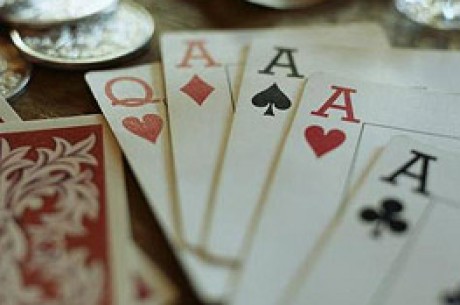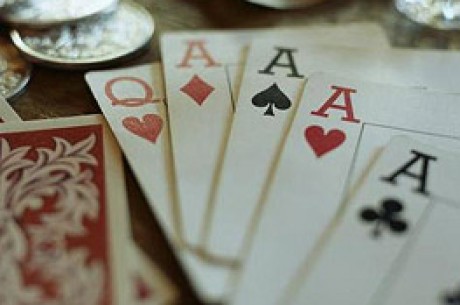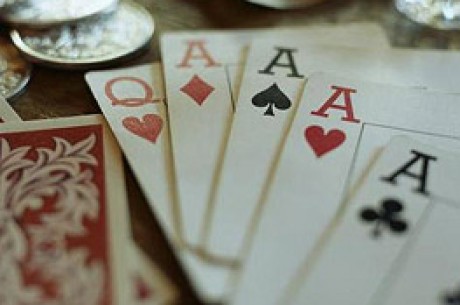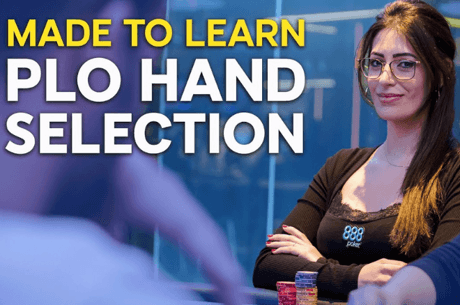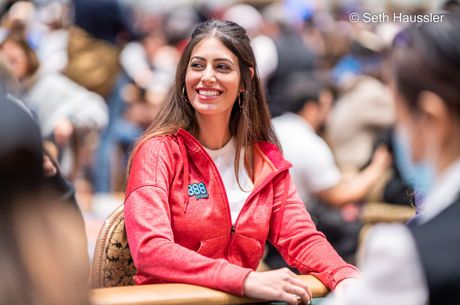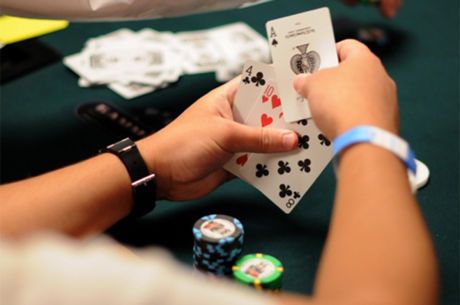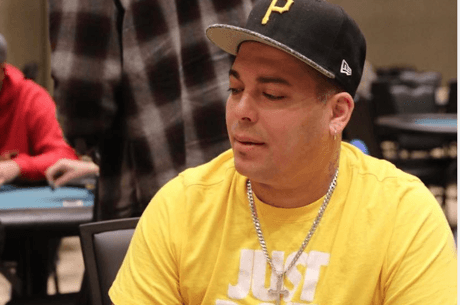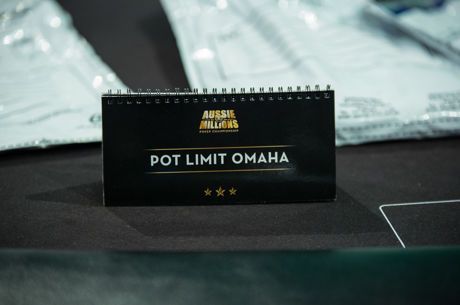Introduction to Omaha Part X - Revision and Practice # 1
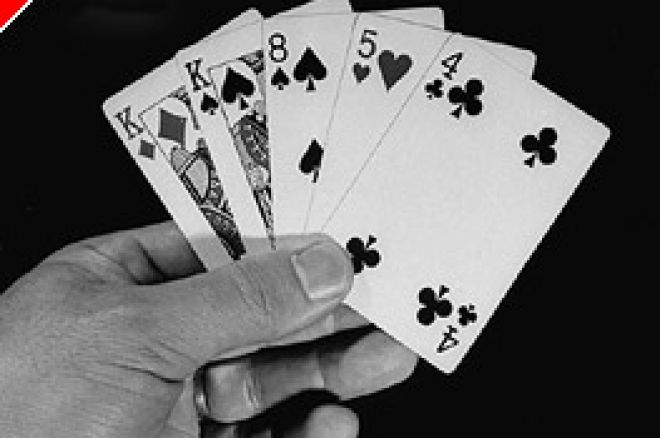
Tony is a regular on-line player living in England. He mostly plays Texas Hold'em and Omaha (High and Split) at fixed, pot and no limit, at both cash and tournament tables. Tony says: "I often play lower stakes games because there is money to be made without excessive risk to your bankroll. Many players I come up against at these levels are not schooled in poker strategy and the truth is they are giving away money, either through ignorance of strategy or misplaced aggression. If you have a limited bankroll, you should be conservative and choosy but the pickings are there. These articles are written to prevent you becoming one of the hunted."
Introduction
In the first nine articles of this series, I have been through the basics incorporating both Omaha High and Omaha Hi/Lo Split. These have been aimed at the online player new to Omaha Poker. I have always emphasised the importance of walking before running so I have assumed you have stuck to the fixed limit tables while putting the ideas into practice. Indeed, pot limit Omaha is a very different beast and you mix it on those tables at your own risk if you have not grasped the basics of Omaha!
I will be taking a look at the pot limit variation in the near future but, before that, I thought it would be a fascinating experiment if I were to put the discussions of the last nine articles to the test by playing a couple of games of fixed limit stakes Omaha; first Omaha High and then Omaha Hi/Lo Split "real time". I have a micro-cassette tape on which I will record my thoughts. When the one side of the tape expires, I'll call it a day and record the result here. Hopefully, these hands will demonstrate some of the problems and puzzles facing the player at the table. There is no guarantee of winning in an isolated one off game (since results should be judged over a consistent run of games; after all, luck does play a part) but if I stick to a tight policy of only playing cards in the manner discussed in the articles, I would like to think I'll see a profit! If not, I would expect the loss to be small.
This article covers the first 19 hands of the Omaha High game. The next article will cover the concluding part of that game.
Best Foot Forward
So, here we go:
I log on to the Party Poker online site and go to an Omaha High $0.5/$1 fixed limit table. I'll start with $100 which is plenty of chips at this level of fixed limit poker. I join a recently-started table with 10 seats that currently has three players on it. Initially, therefore, I will play less tightly than I would at a full table.
Hand 1: I am two places behind the button and the table is filling quickly so there are six here now. Perhaps I will be tight after all! I post my $0.50 blind and am dealt Qc Jd 7d 2h. It is a poor hand but it is flat-called so I see a flop which comes 5h 4d 5d. Nothing much here but a J flush draw. With a pair on the board I must watch out for the full house. I may regret this but I'll raise here representing strength. Only one person has called so the raise has increased my chances. Turn is Tc and I check, as does he. An 8d on the river completes my flush. The other guy bets out $1 and I decide to test him and raise it to $2. It is called and he shows a full house with a T5 in his hand. Immediately, this demonstrates the danger in Omaha when the board pairs!
Hand 2: Jh 2d Kc 8s. Nothing here as the four cards barely connect at all and the suits are all different. Fold.
Hand 3: In small blind and dealt 7s Jc 2h 5d. Rubbish again. Fold.
Hand 4: I'm on the button but I'm dealt Kh 8s 8c 2c. Not very good so I fold.
Hand 5: In the cutoff; Kc Kd 8h 6c. A strong pair, single suited. Not desperately well-connected but I'll raise this with 7 people on the table and see what response I get. I get four callers and the flop is As Js 9c. That's not very helpful. However, it is checked round to me so I'll bet out a flat $0.50 to see if there are any aces betting. Two callers. Turn 5h. Checked to me again and I check this time for a free card. River is Ah. Checked to me again so that makes it more likely there is no ace out there nor are there any straights or flushes on the board. So I'll bet here. They both fold. I take the pot down and that takes my stack back up to $100 after the loss on Hand 1.
Hand 6: Two off the button. 9h 3c 3d 7s. Fold that junk!
Hand 7: Still six at the table. I am now the big blind. 5d 5s 4h 2c. Not much really, all different suits but the cards are connected, so I check as it is flat-called to me. Flop is 6h 3h 9d giving me an open-ended straight draw but a flush draw for anyone else holding two hearts. I bet $0.50 which is called and raised; the raise is called in three places, so I'll call at the cheap level and see what comes down. Turn is Td making two flush draws on the board. I check. Original raiser bets $1. That is called. As there is the possibility of a higher straight with a 69T on board as well as the flush draws, I decide to fold. The river was a 2d which would have made my 6-high straight but opened up a diamond flush. Everyone folded to the first raiser so I'll never know. Once you've folded, move on and do not fret about what might have been.
Hand 8: Small blind. Th 6c 9s 3c. Nothing much so fold.
Hand 9: Button. Ts 8c 4c 3h, so again I fold.
Hand 10: Ad 5d Qh 4c. Nothing very special. I have a few flat calls in front of me and a possible nut flush in hand but I'll fold it.
Hand 11: Table is filling up with 8 players now so I must stay tight. I'm dealt Js 2d Qh 8s. A lot of junk. Fold.
Hand 12: 6d 4h 6s 2d. Nothing to get excited about. Fold.
Hand 13: Jc 6d 9c 5s. Too many remote connectors there for me. Some might see the flop but for me there are too many gaps to fill at the higher end. Fold.
Hand 14: Kh 2d Jh 8s. I'll fold those too as, apart from the suited K and J, there's little support.
So far I have received 14 hands but have yet to see any real quality. This demonstrates that multi-handed limit Omaha should be played tightly. It is too easy to pay to see a flop with junk. It is a waste of your profits to do that.
Hand 15: Big blind. 3d Qc 3h 7d. Not much good but flat-called to me so I check. Flop is 2h 8d 8h. That does nothing for me and I fold to the first bet.
Hand 16: 5s 9c 7c As. Well, this is double-suited with nut flush potential, a suited connector combination and moderate straight draws. I'll call in the small blind and see what comes up. The flop is Jc 7h 9h which gives me a 2-pair but opens up the danger of a straight as well as a flush in a suit I don't have. I am first to act which is also a disadvantage but I will make a cheap bet and gauge the response. If there is a raise I will fold. There are five callers. Turn Ks which further enhances the dangers of a straight but doesn't help me at all. I will check here. The next person bets $1 and it is called by two others. I think I have to fold here as bottom 2-pair on such a board is unattractive. Even if I make the full house, there are many combinations that could beat me; like K9, J9, K7 or J7. As it happens, the river was a 6 and the winner held a pair of J's giving them top set on the flop. Had either a 9 or a 7 hit the river and made me a full house, I would have drawn dead.
Hand 17: On the button. 4s Jd 6c 9s which is no good to me. Fold.
Hand 18: Js 4h 7c 9c. Nothing to get excited about and I fold.
Hand 19: As Ks Jh 5h. This is a better, but not great, hand with suited AK and another high connected card, the J, and a second suited combo albeit a raggy J5. Had the 5 been another suit, the hand would be marginal at best. I'm in fairly late position so I decide to raise to $1 with this and see if I can remove the raggy hands that could draw later on. My raise is called in five places which just goes to show how players will pay a high price to see a flop with rags (they cannot all have good hands!). The flop is 9s Jc Tc. That gives me only the top pair but I am lacking without the Q. However, it is mostly checked until one bet before me. I decide to raise the single bet in the cheap round. All fold to the one active player who unfortunately has re-raised me which suggests he perhaps hit the temporary nuts holding AK for a top straight. I decide to call as he is the one player left and it is only another $0.50 into an expanding pot. The turn is Jd pairing the board (which could scare a straight holder) and gives me a set of J's with ten possible "outs" (cards that will improve my hand) for a full house or better for which I am committed on pot odds. My opponent might be holding two of the outs (AK) so I check and it is checked back. This check on the turn is hard to judge as it could mean either a slow play with the nut full house or a genuine fear of the full house to his straight. The river is 5s which makes a full house for me - Jackson Fives! This is not the nuts if my opponent holds JT or J9. After the river, my opponent bets out $1 and I raise it to $2. He only calls so I believe I am home as he would surely re-raise a big full house. He mucks his cards which I guess included AK but maybe K9, 98 or QT. I take down the pot of $12.50 taking me up to $105.
End of Part One!
Conclusion
After only 19 hands and despite a poor run of cards, I am still $5 up. In my opinion, the fundamental reason for this is not the two pots I took down but the 17 hands I folded of which 13 were mucked before a flop was seen. If I had played like many new players do and paid to see a flop, that would have cost me my profits with a very small chance of such raggy hands going on to win a pot. I have read several professionals who say that the key to winning is in the folding. I fully believe it.
Next time, I will conclude this short game of Omaha High which will show that sometimes you just do not get the run of the cards!
Exorcism
9 June 2005
Ed note: Our highest rated Omaha games are at Ultimate Bet

